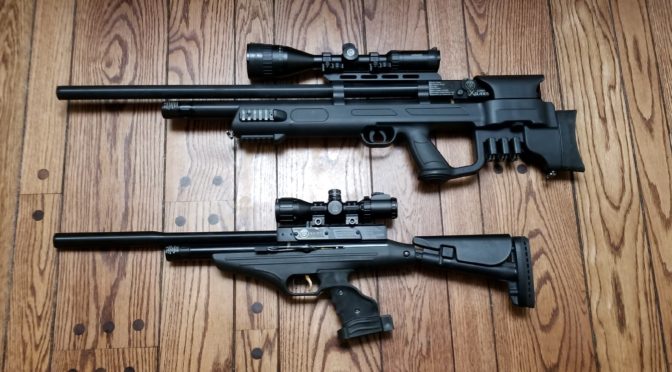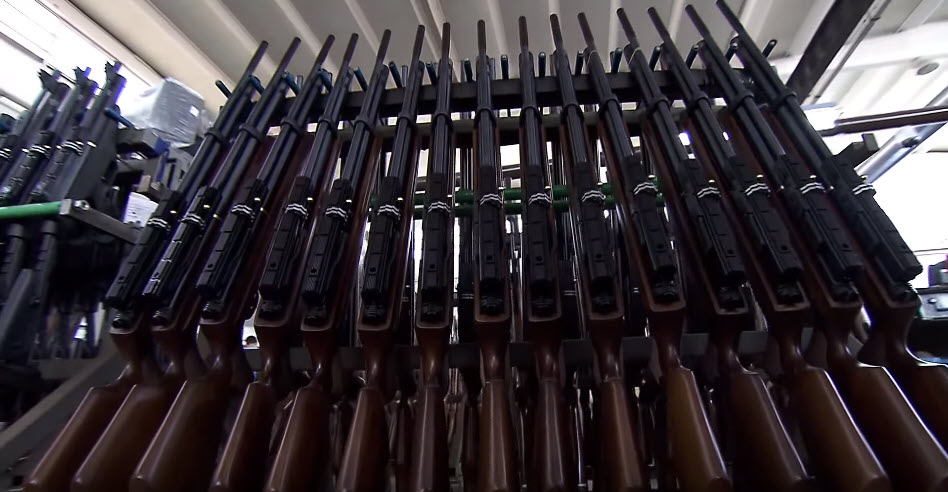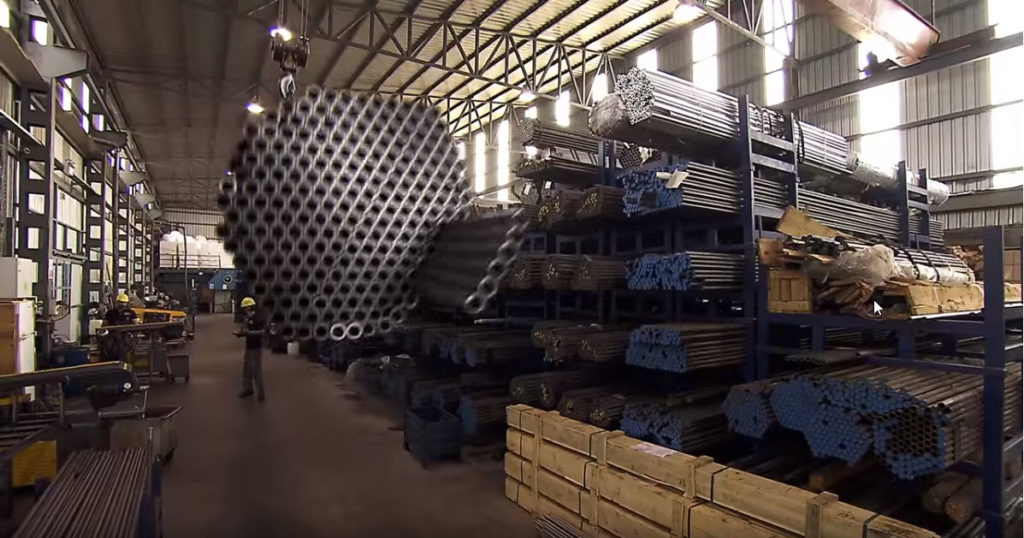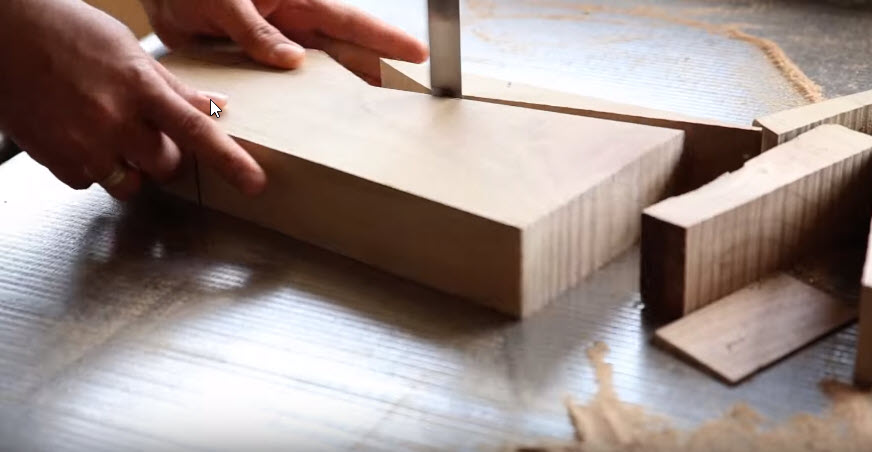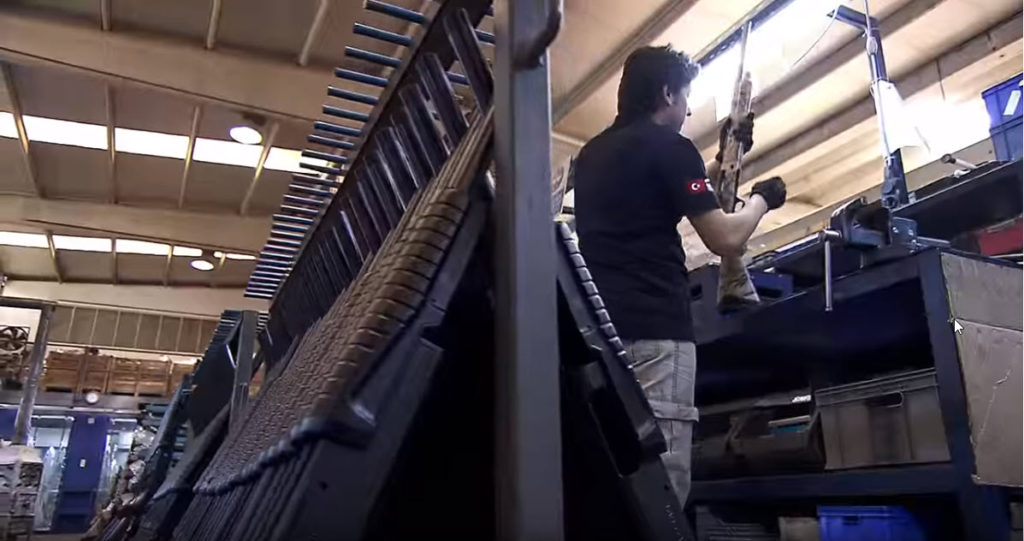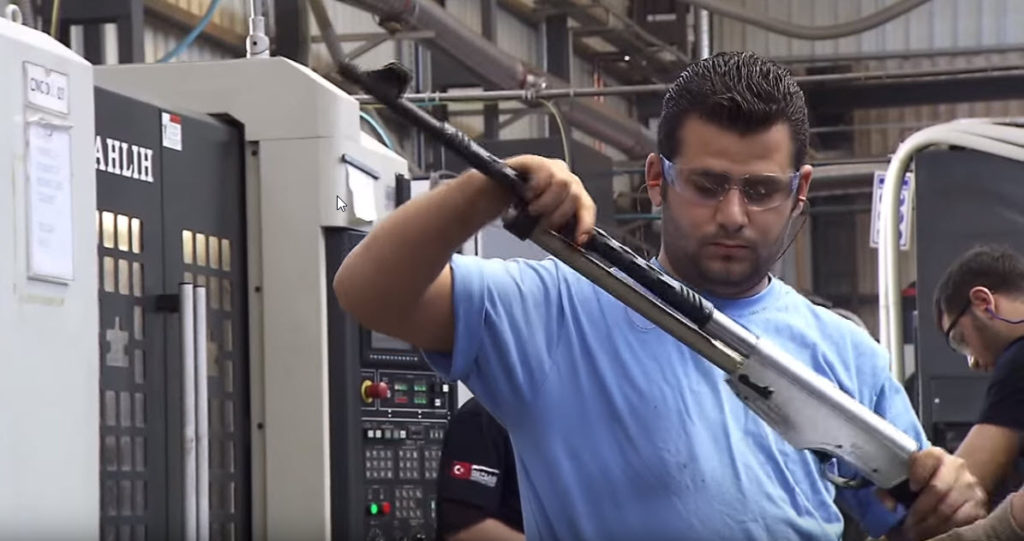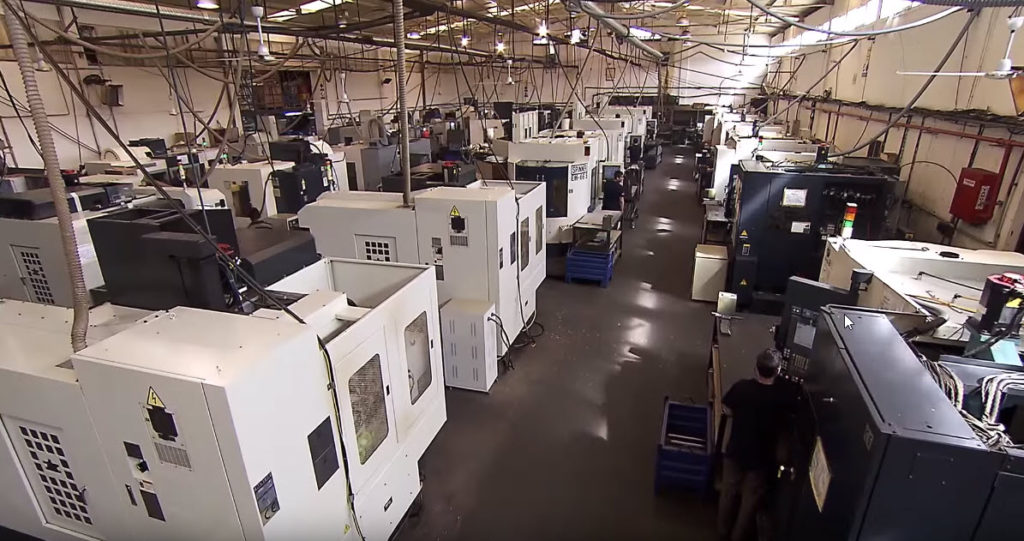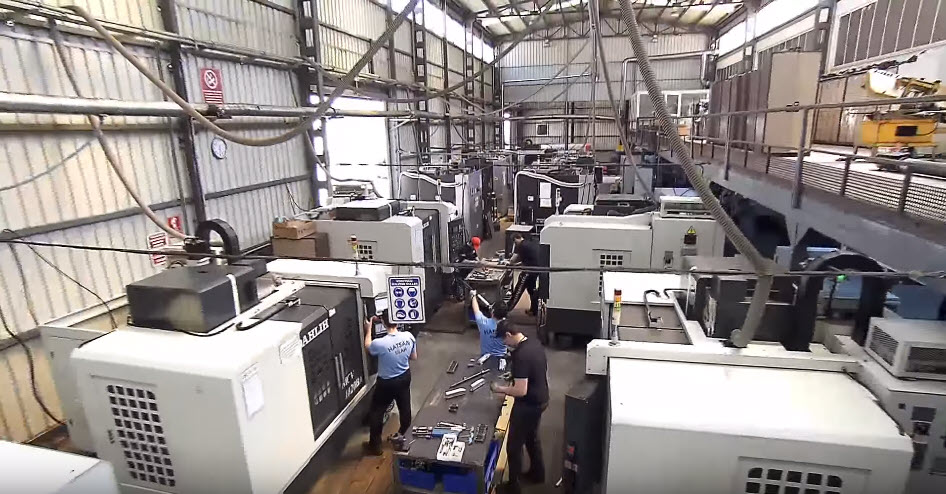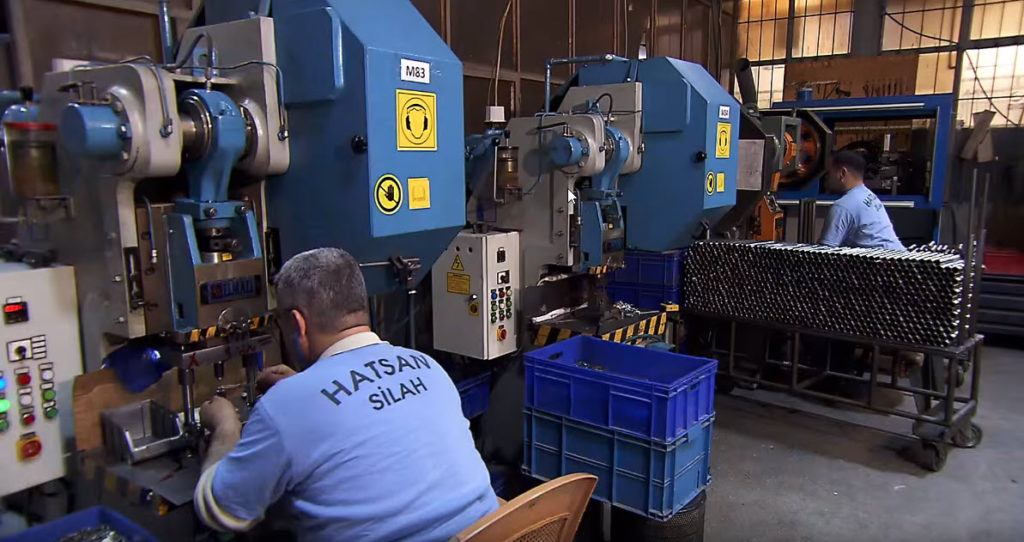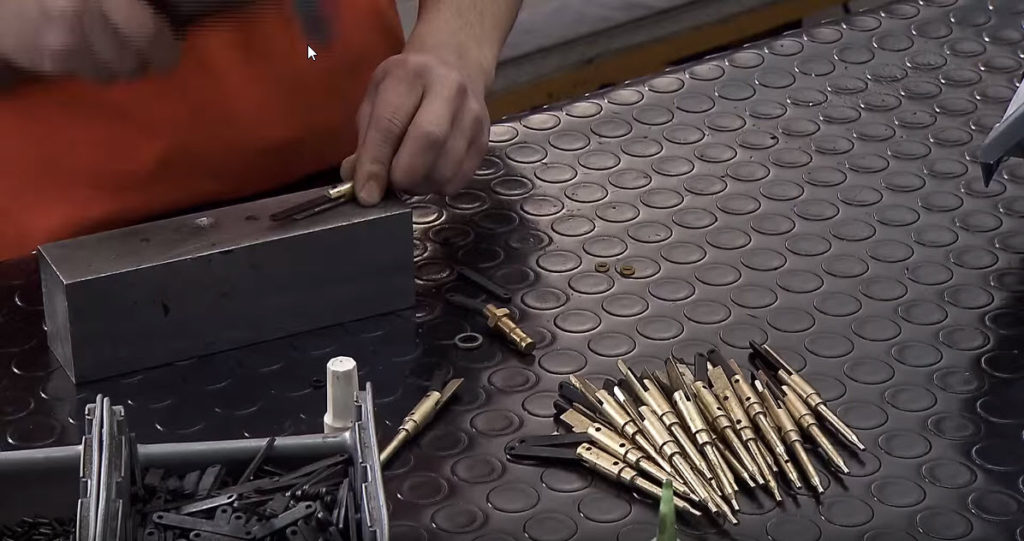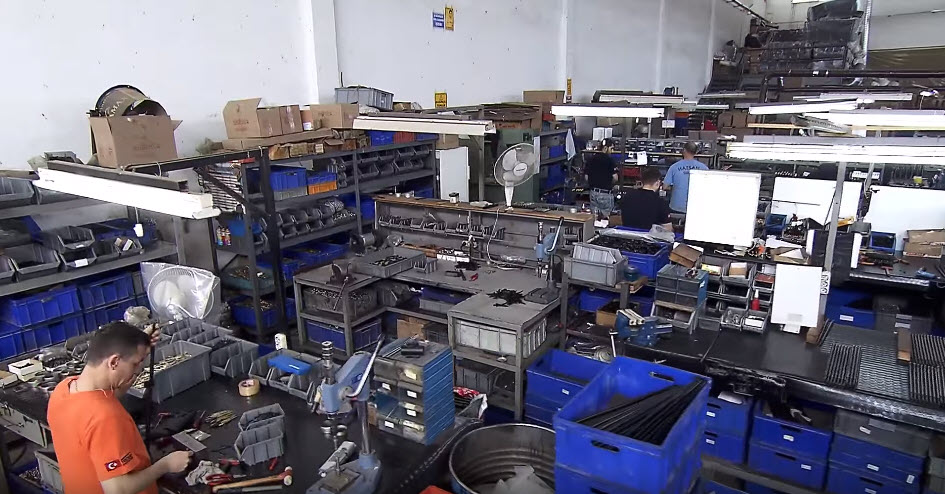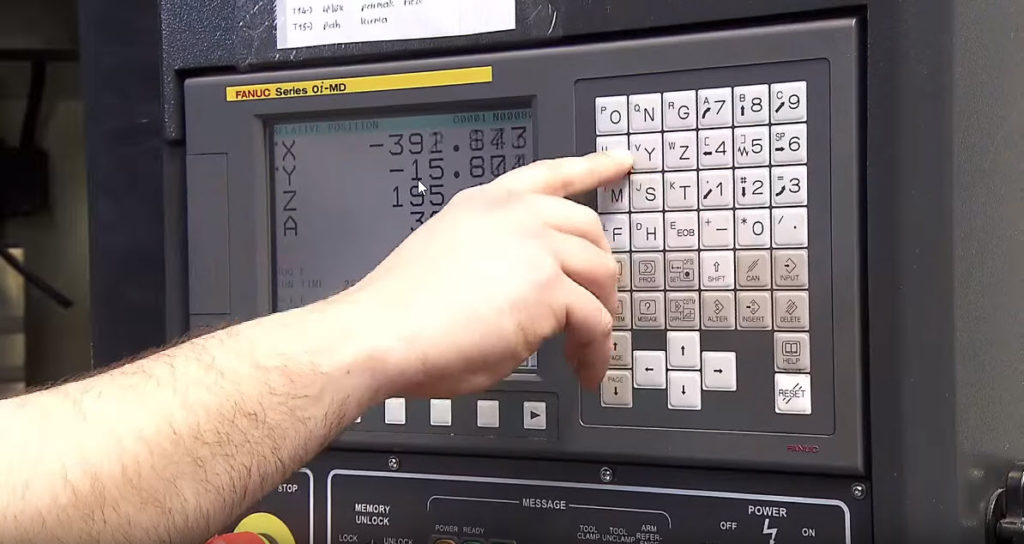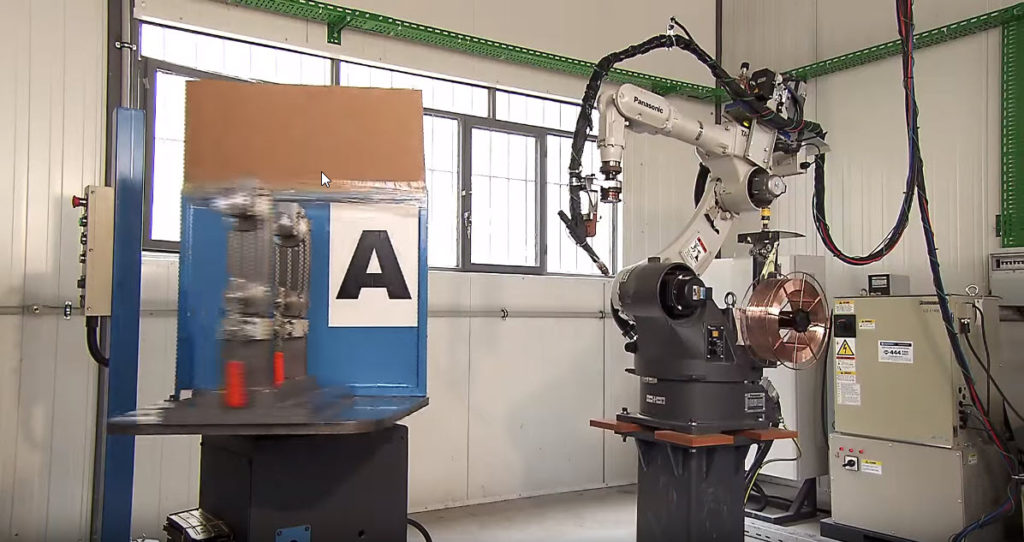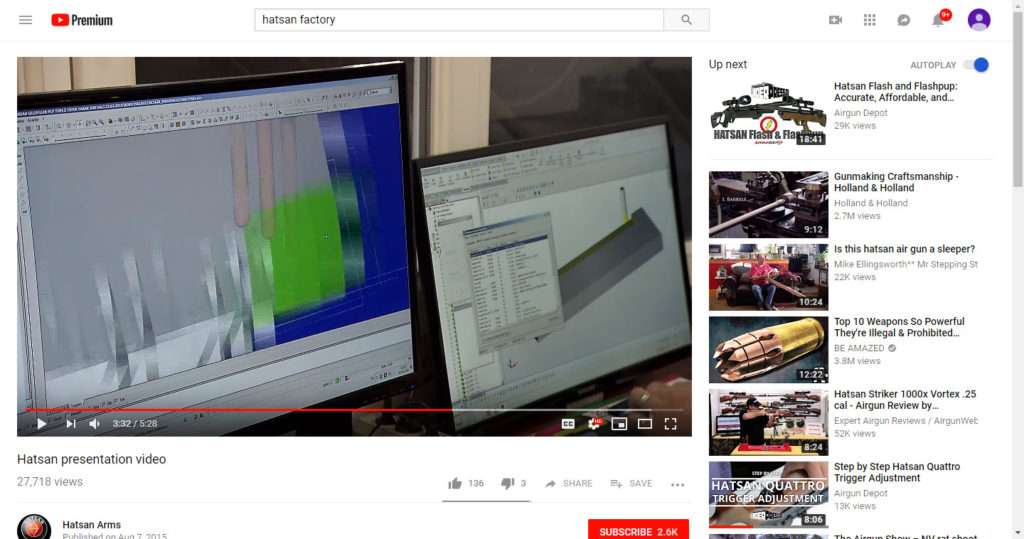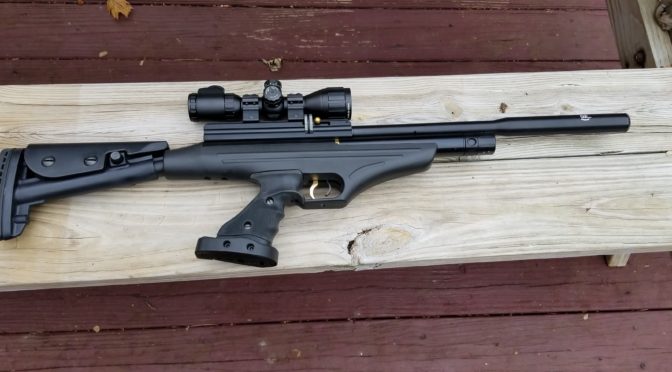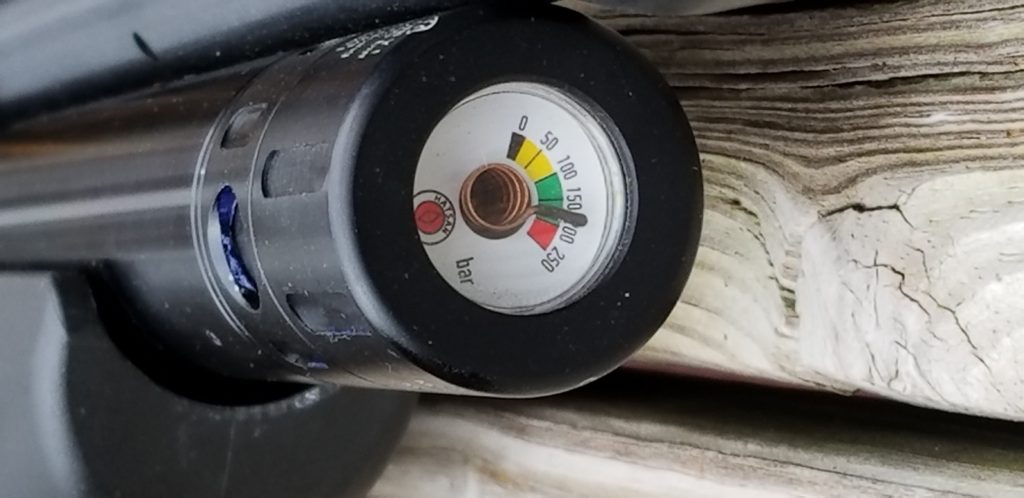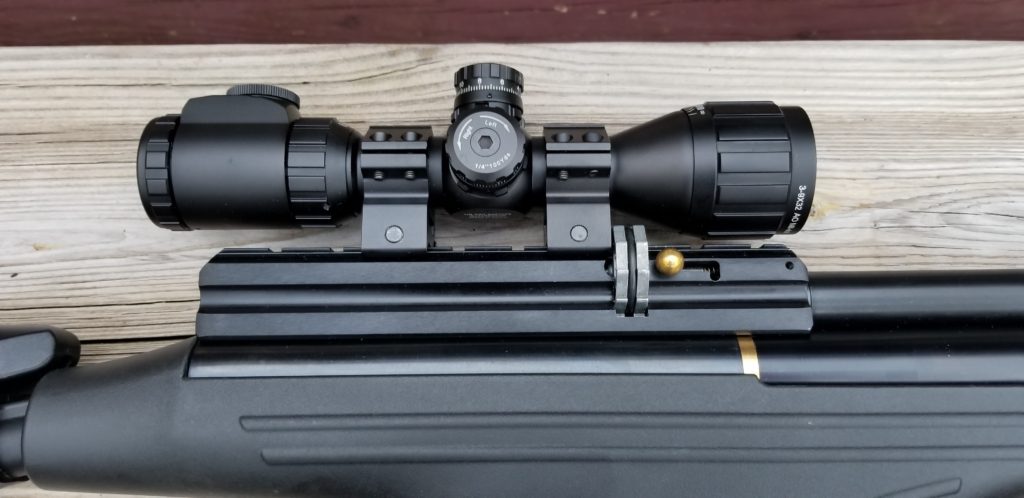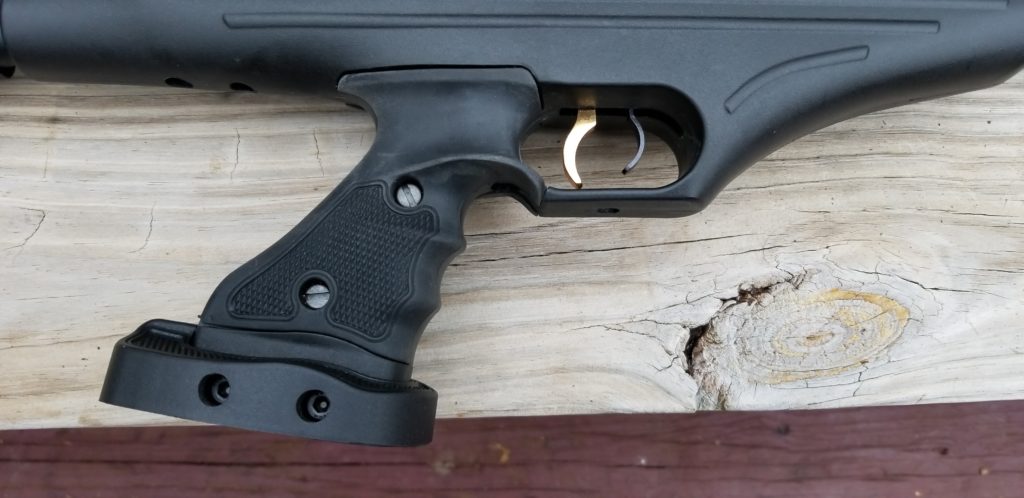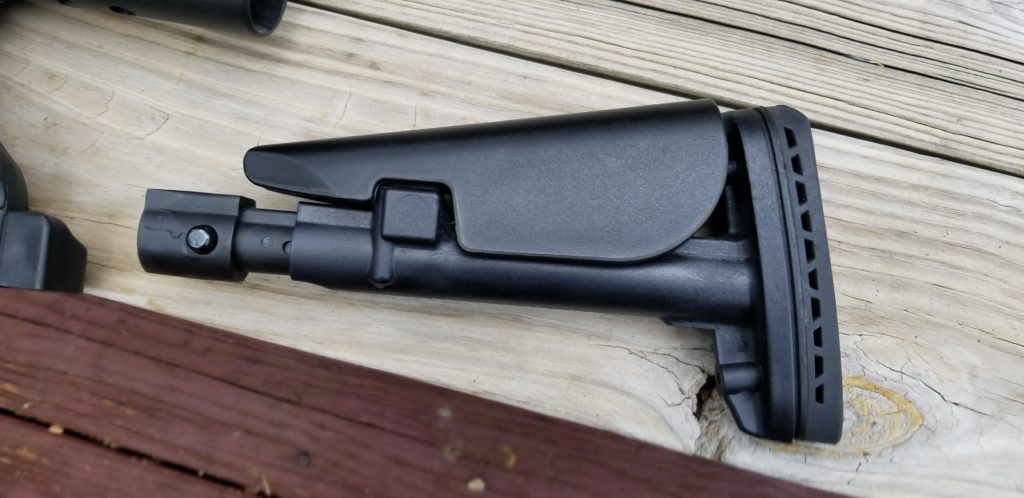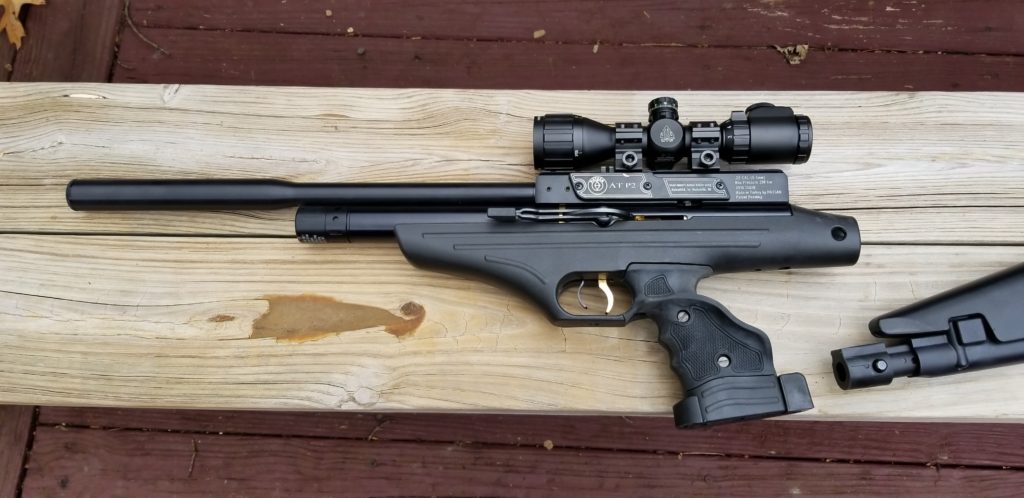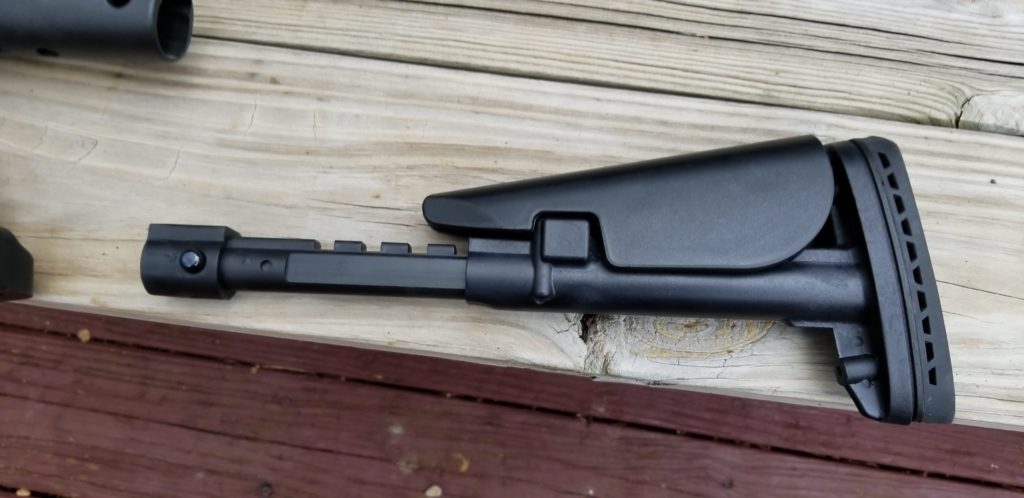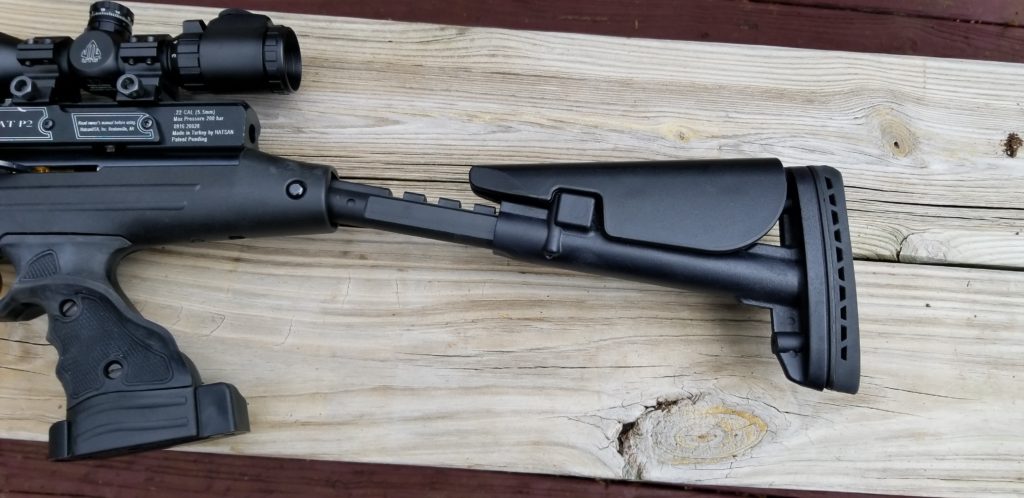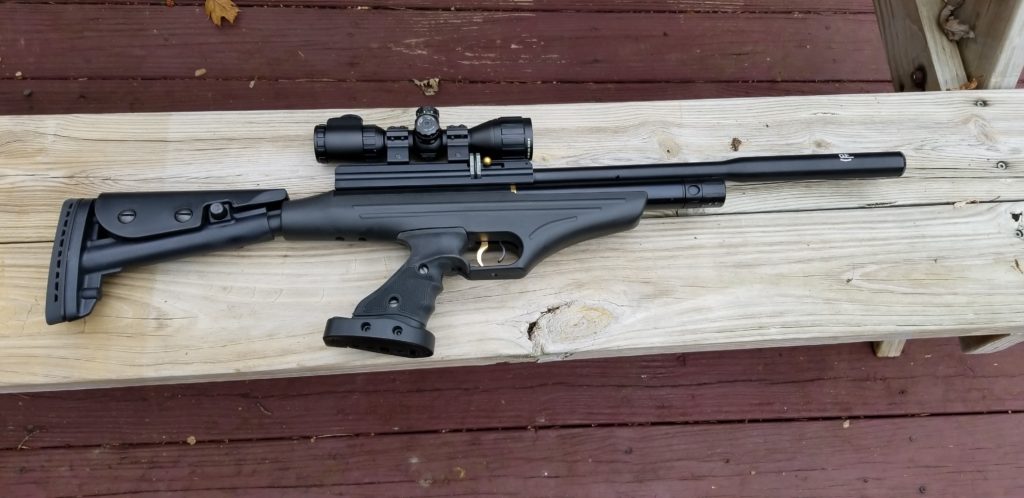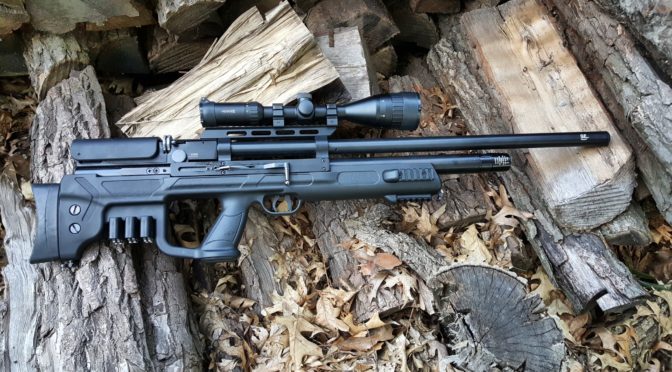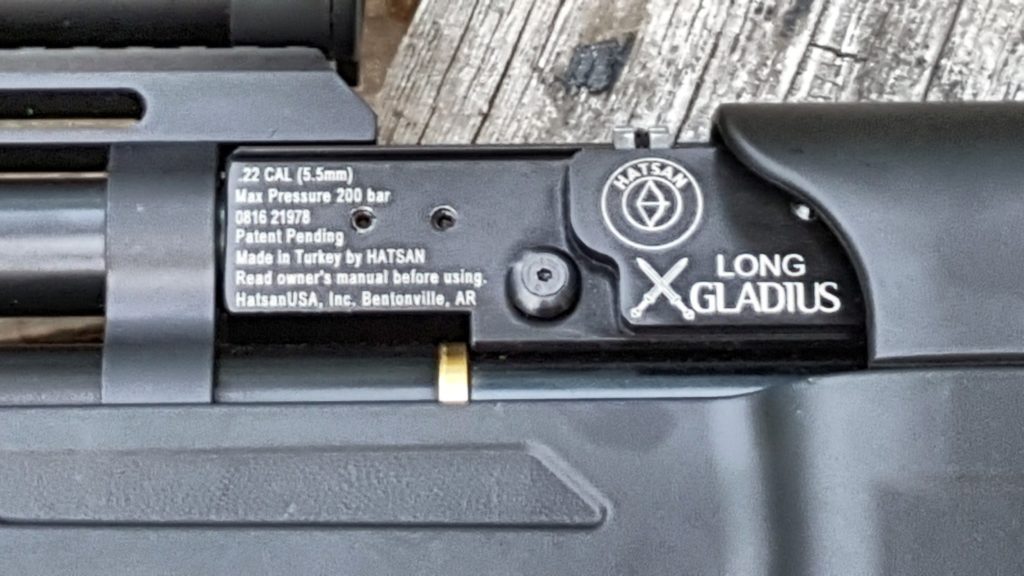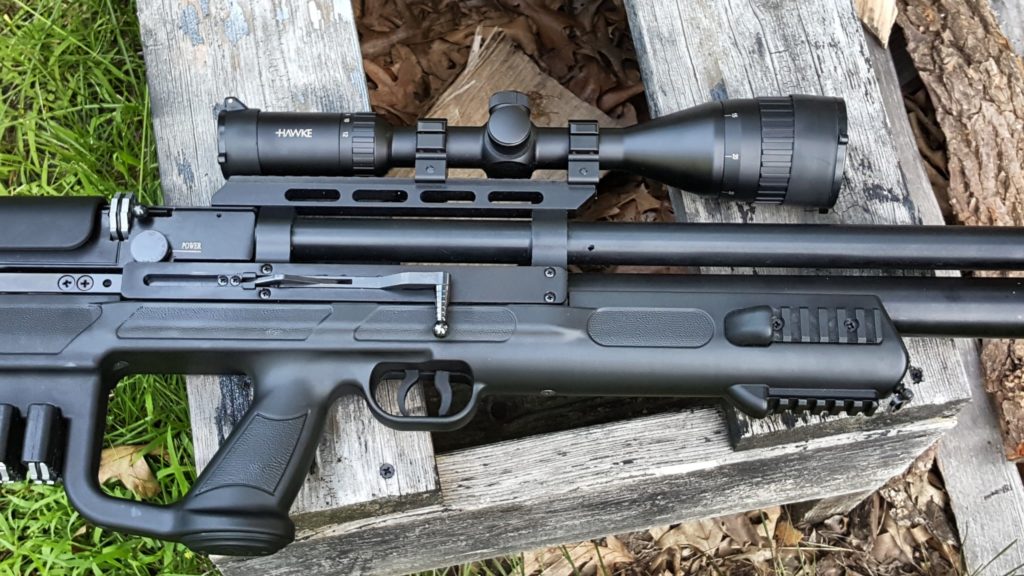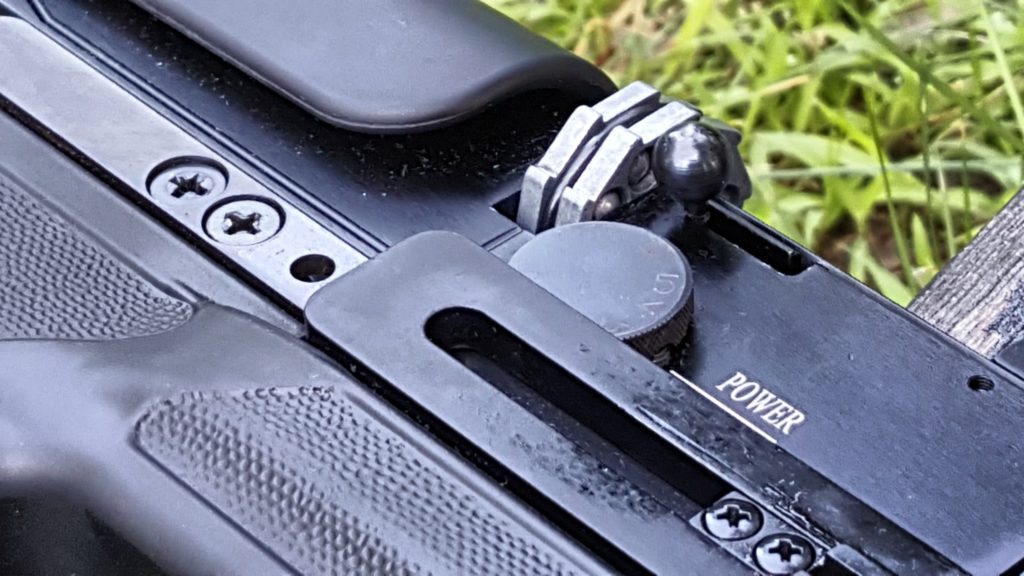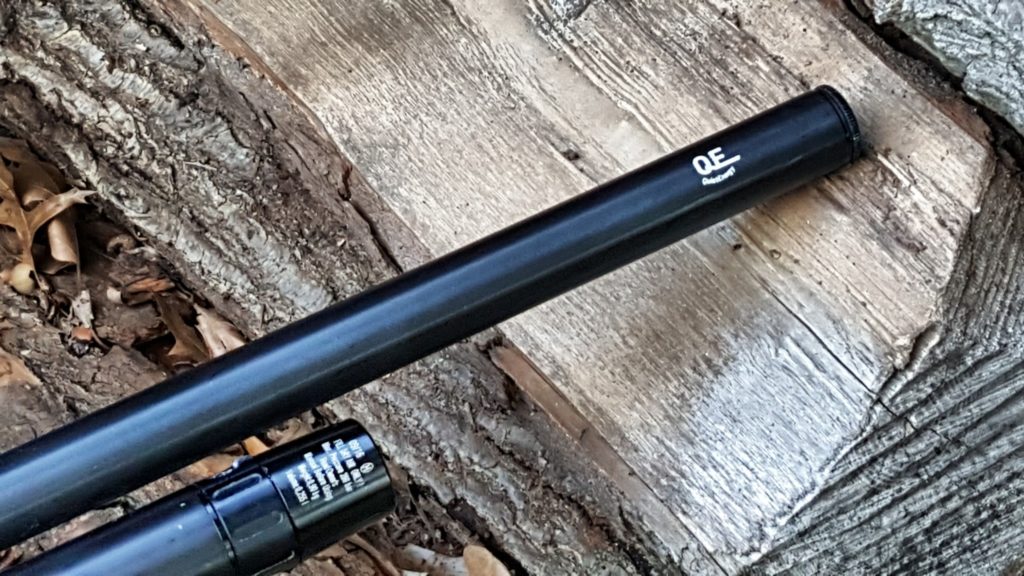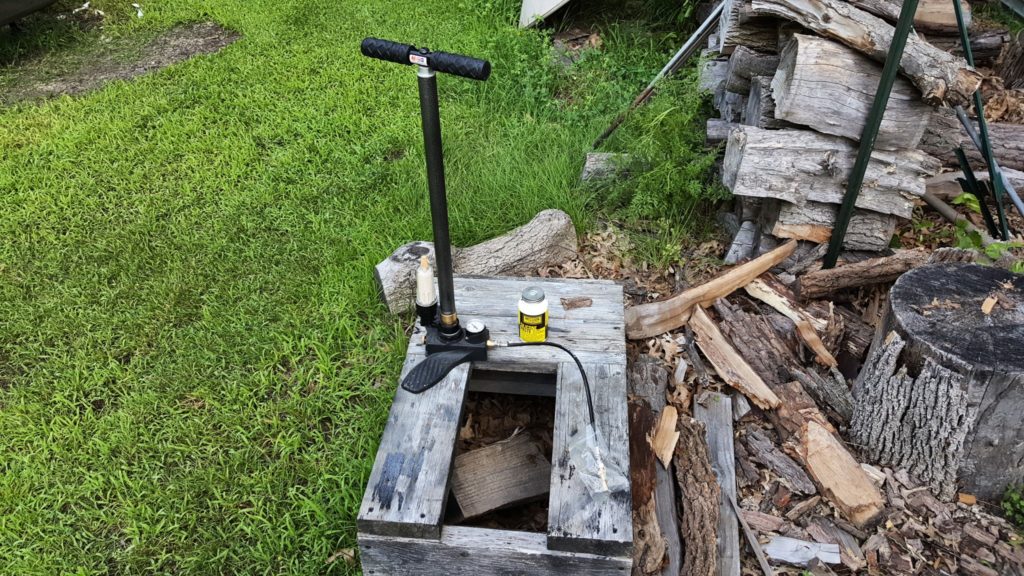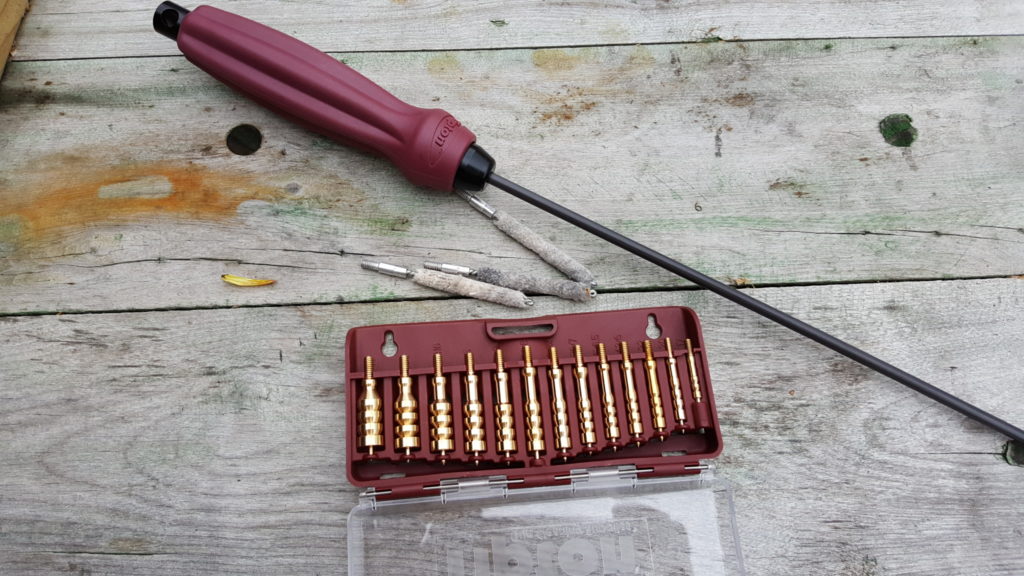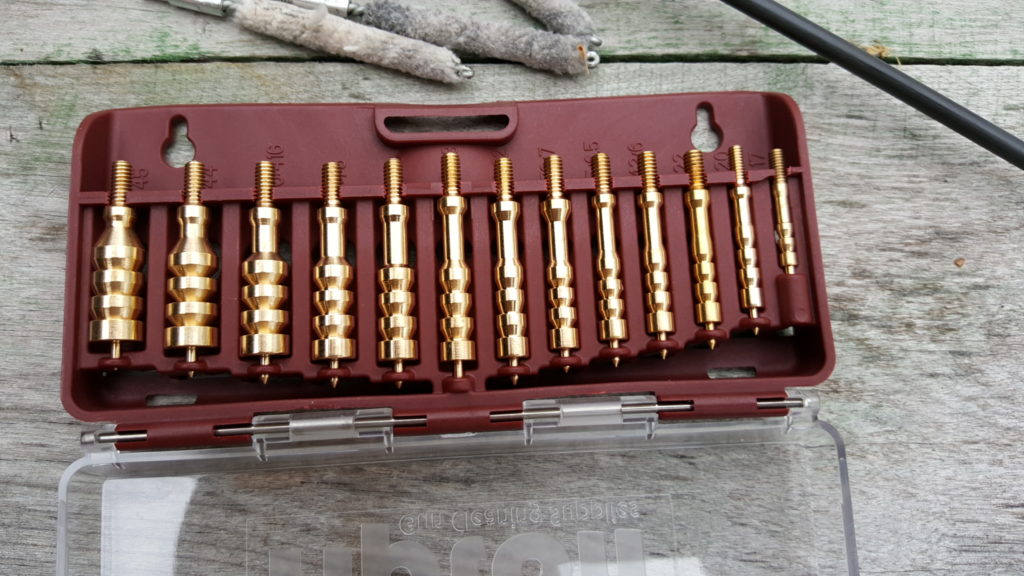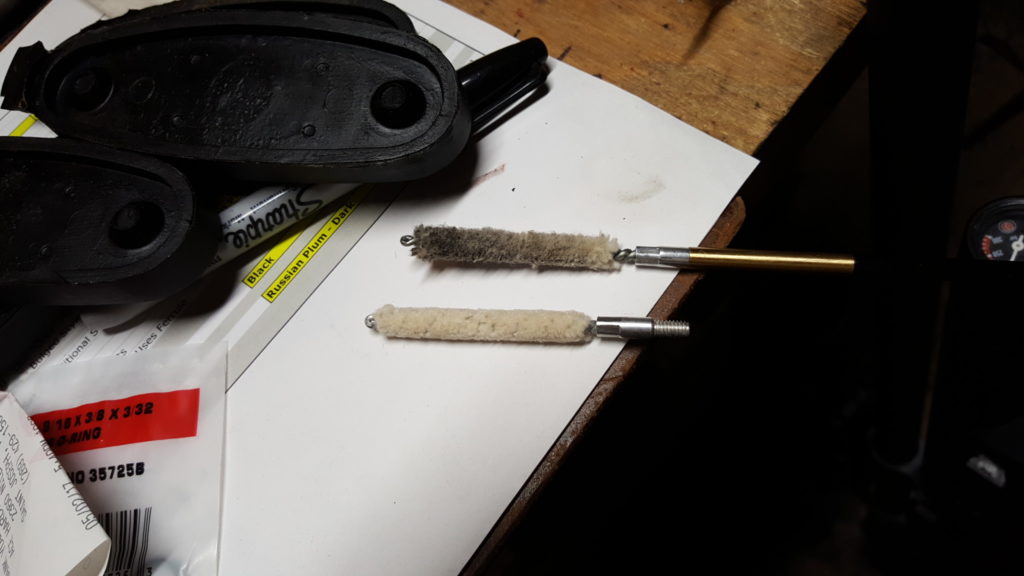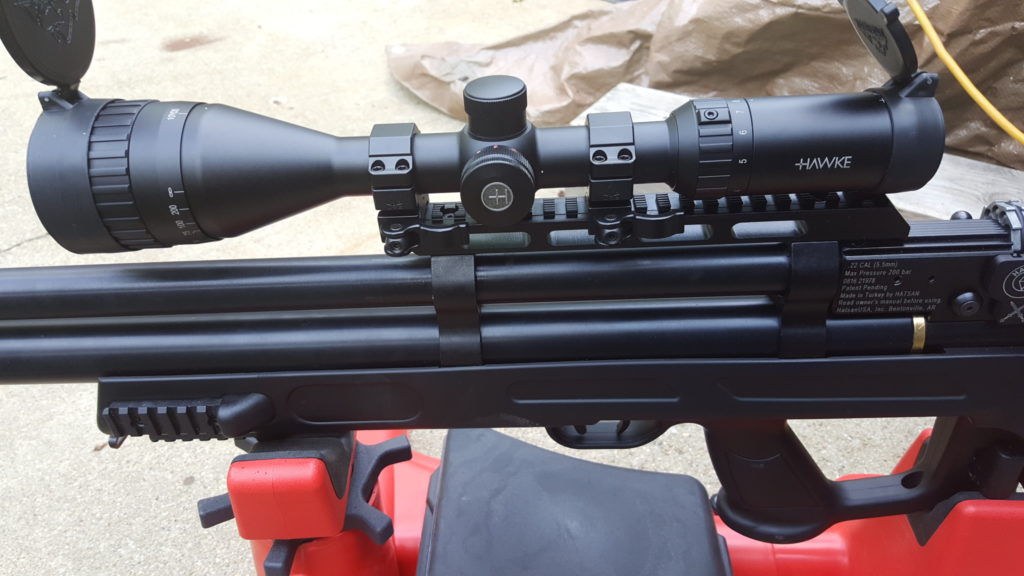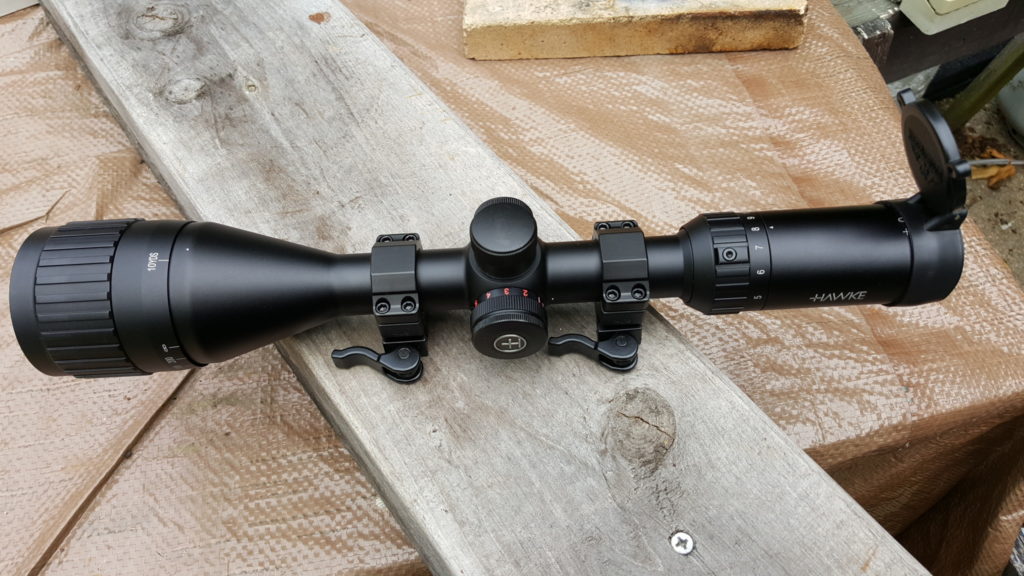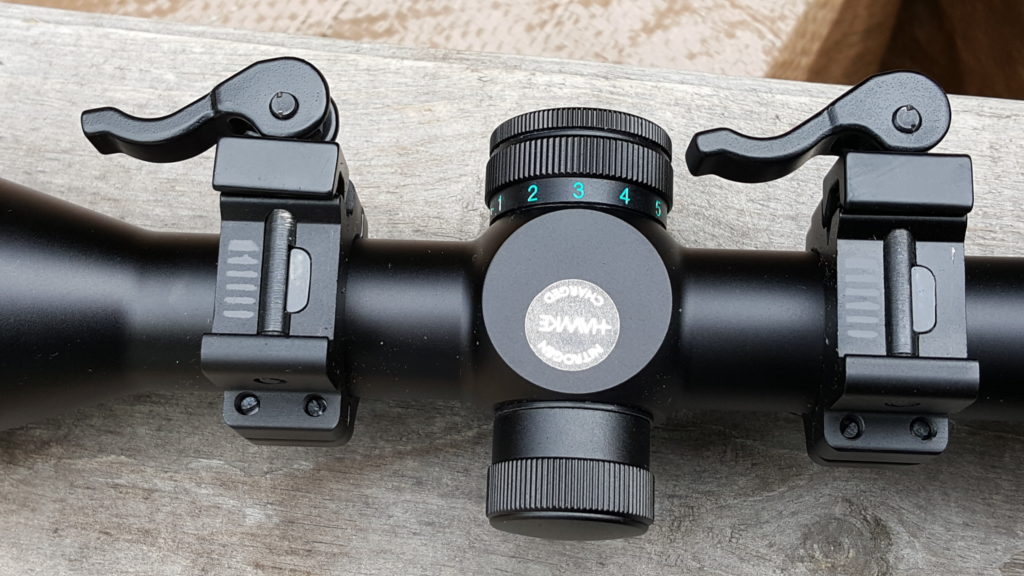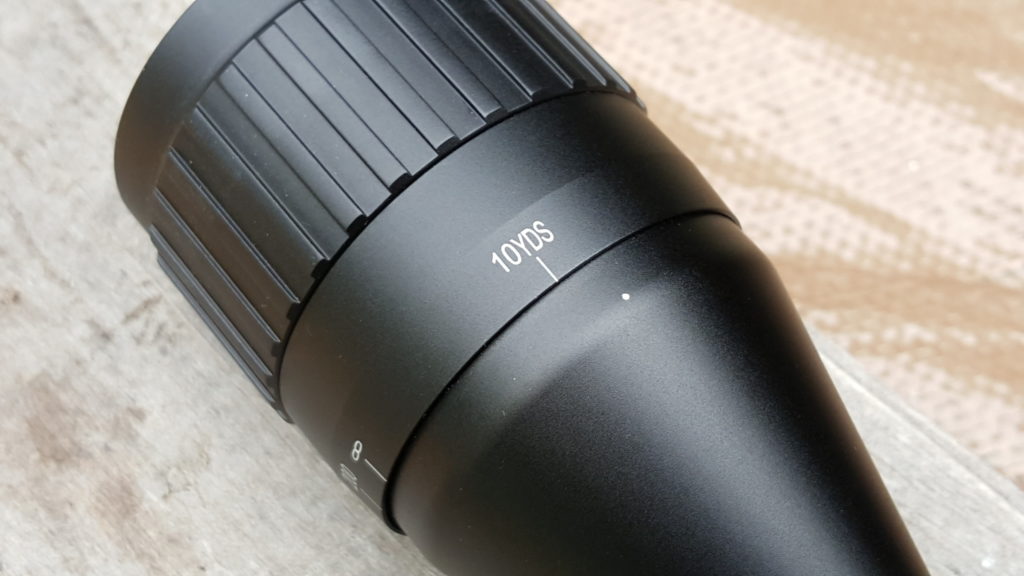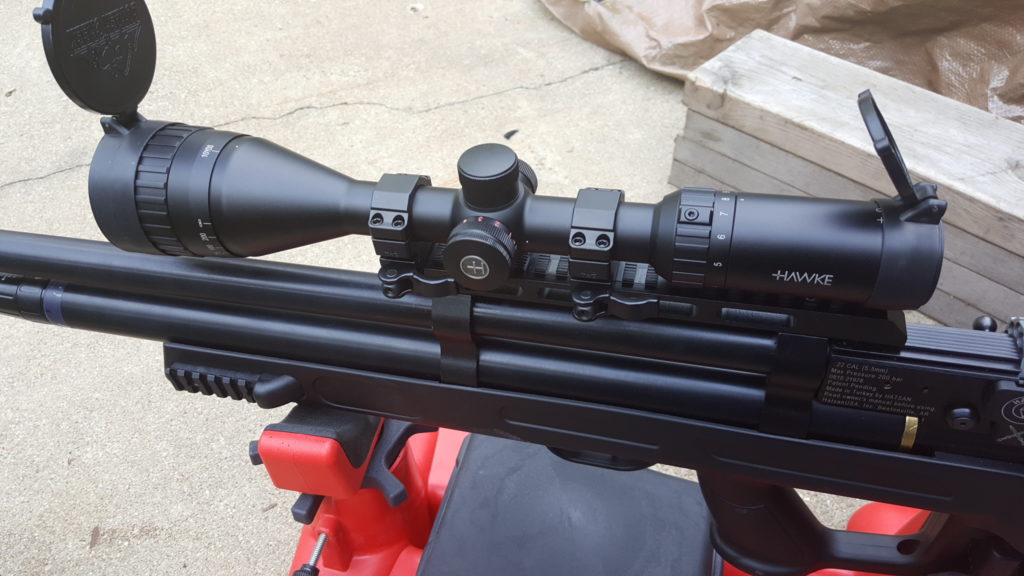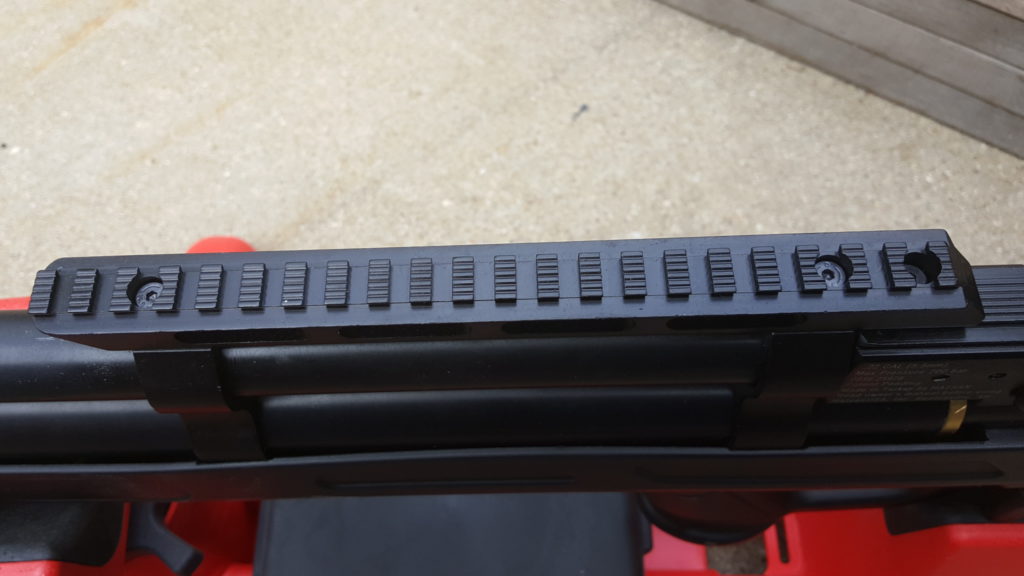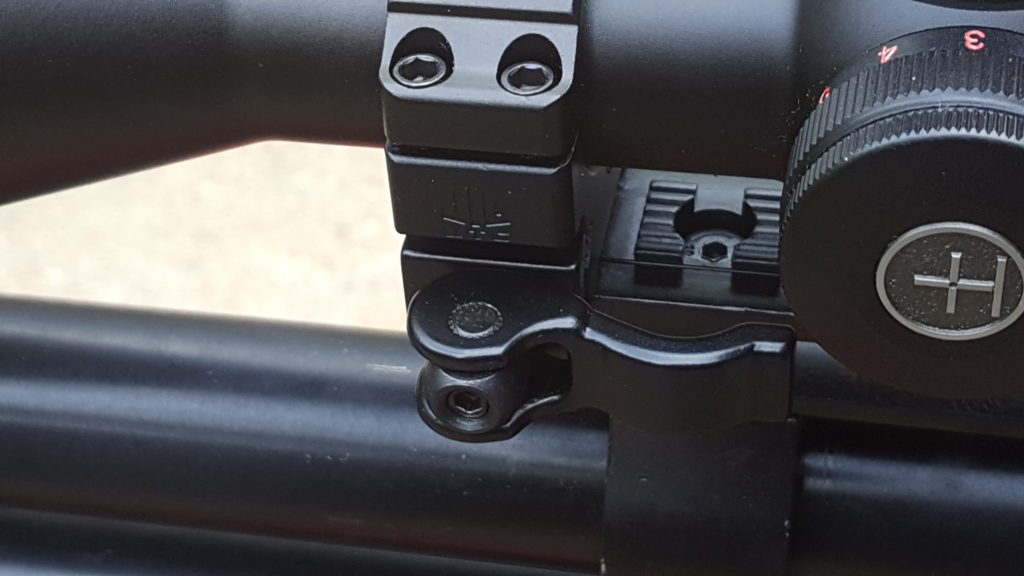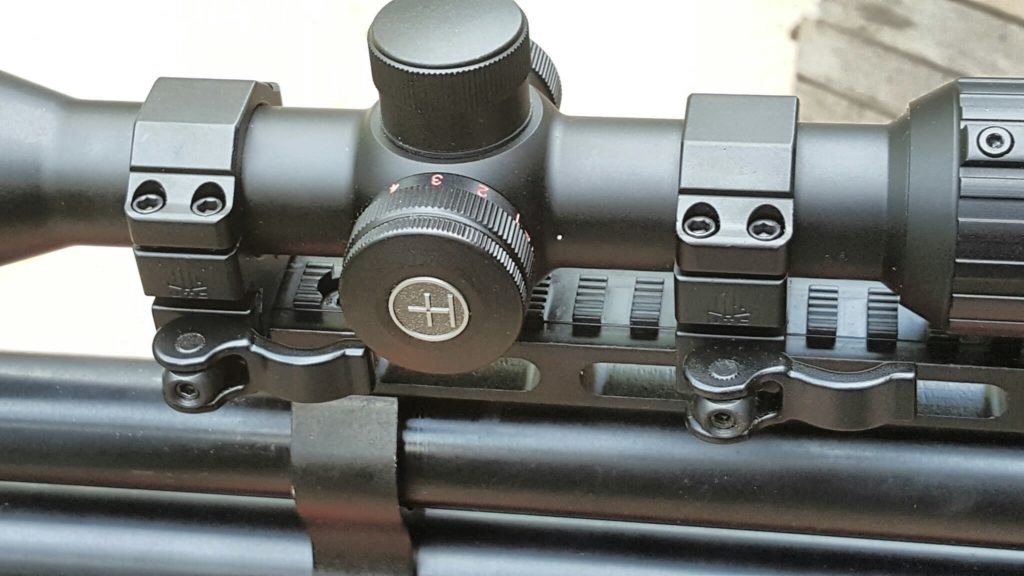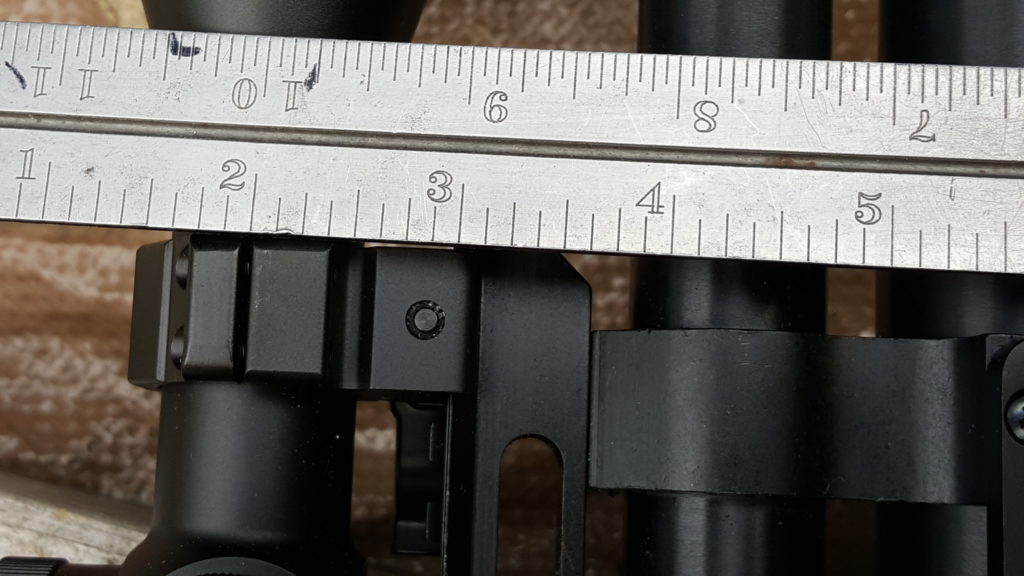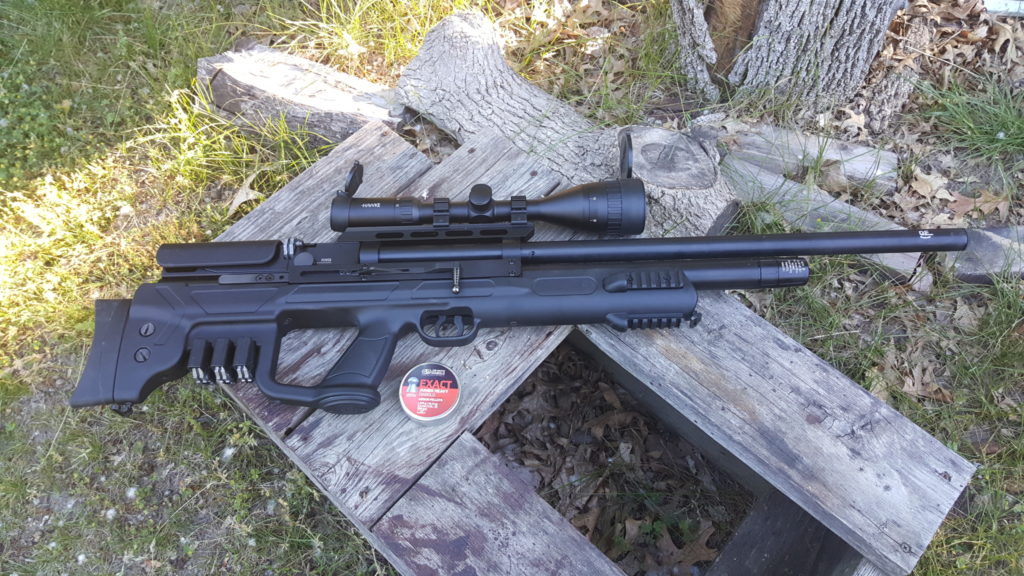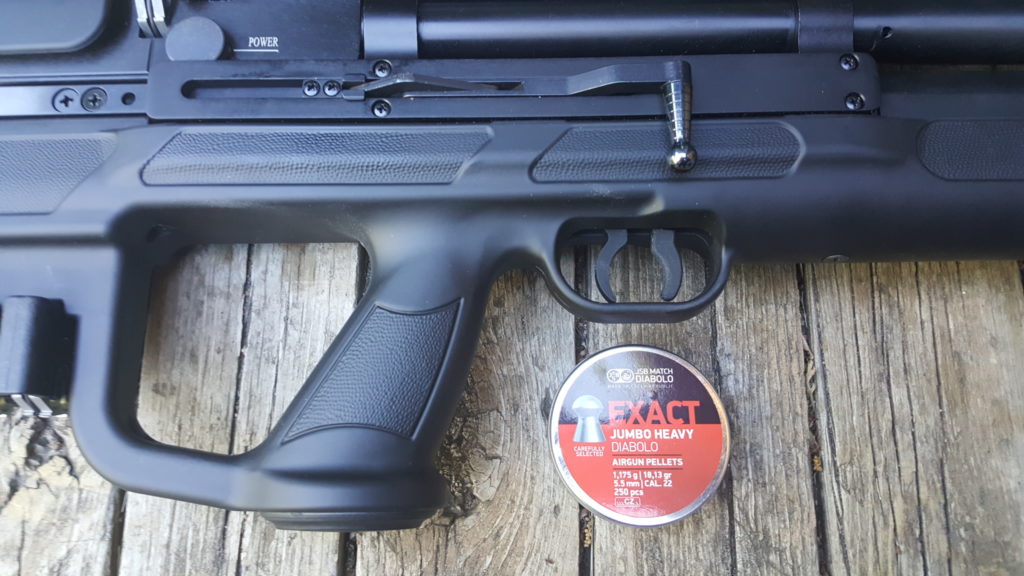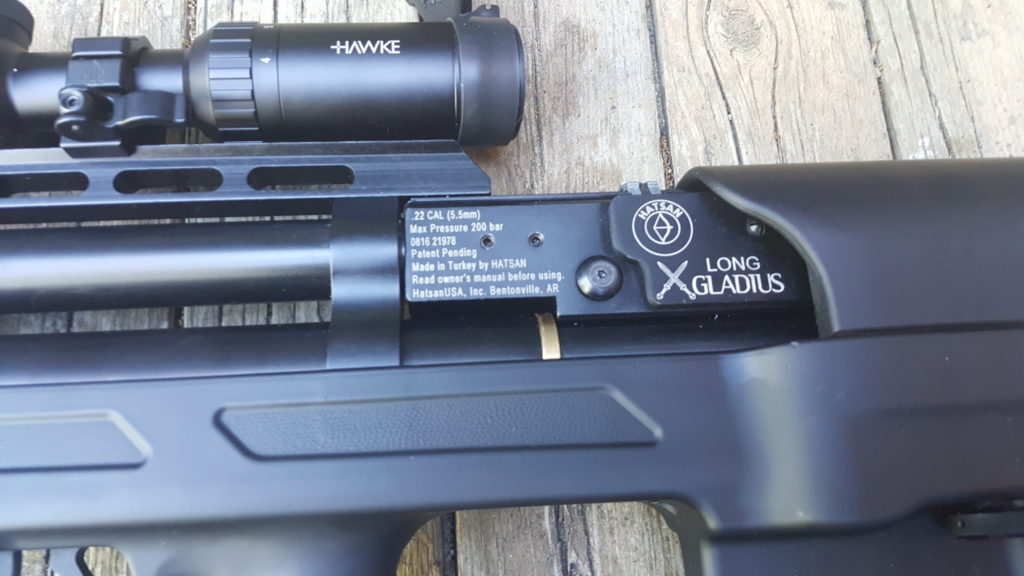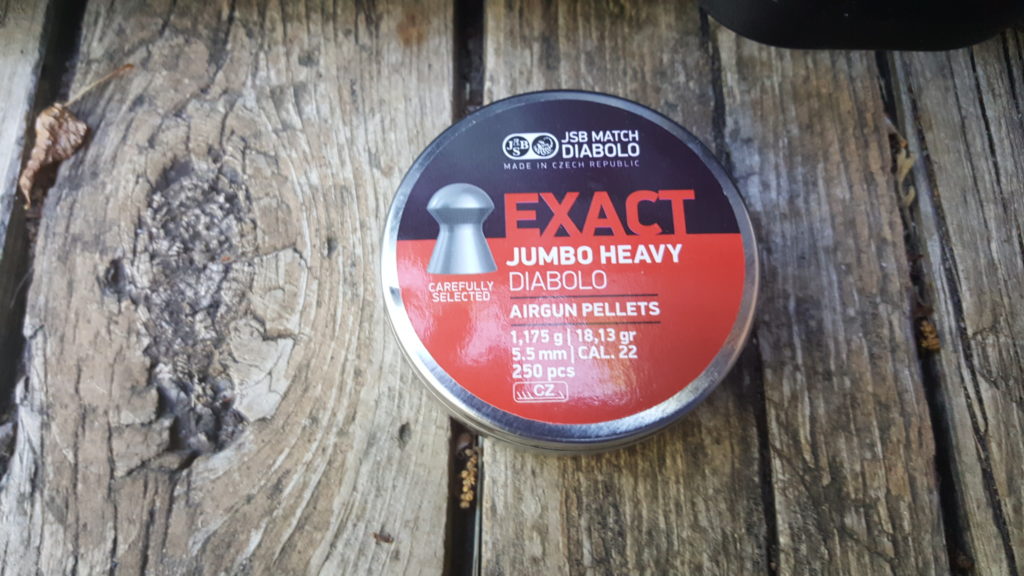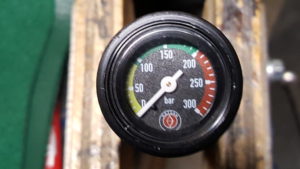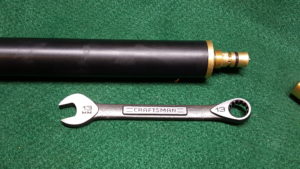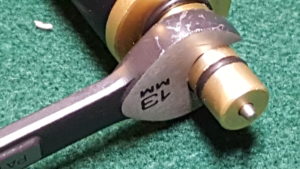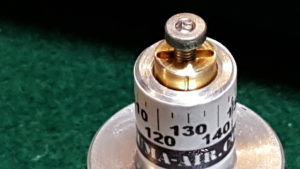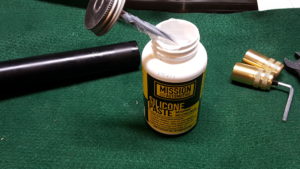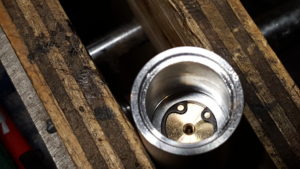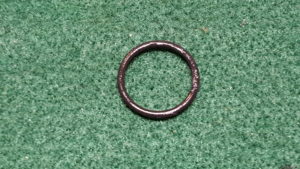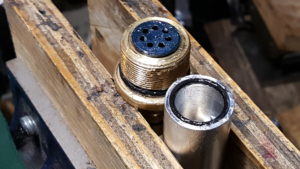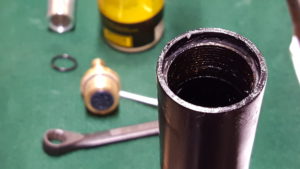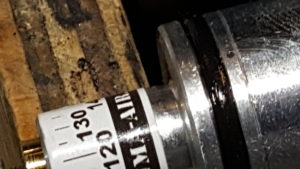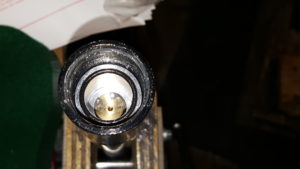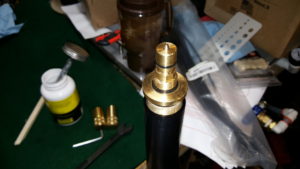Before I bought my Hatsan AT-P2 QE Pistol, I did a bunch of research. I wanted a very compact yet powerful and accurate pre-charged pneumatic (PCP) carbine or bullpup that was a repeater for quick and accurate follow up shots for pest control of tree and ground squirrels.
I needed something smaller than my Gladius Long, lighter and did not need the power levels that the Gladius Long bring to the table. The Gladius Long is an absolutely wicked PCP bullpup but for what I need most of the time – discrete firepower to dispatch squirrels and rabbits inside of 12-15 yards most of the time – it was overkill. I love it and am not selling it, but definitely needed a different go-to airgun.
So, I watched a ton of videos and decided on the Hatsan AT P2 and decided to go with the QT-P2 QE Pistol. It was compact, lighter, had solid reviews and had both an adjustable stock and in integral noise moderator built in. Hatsan refers to these as their Quiet Energy (QE) line.
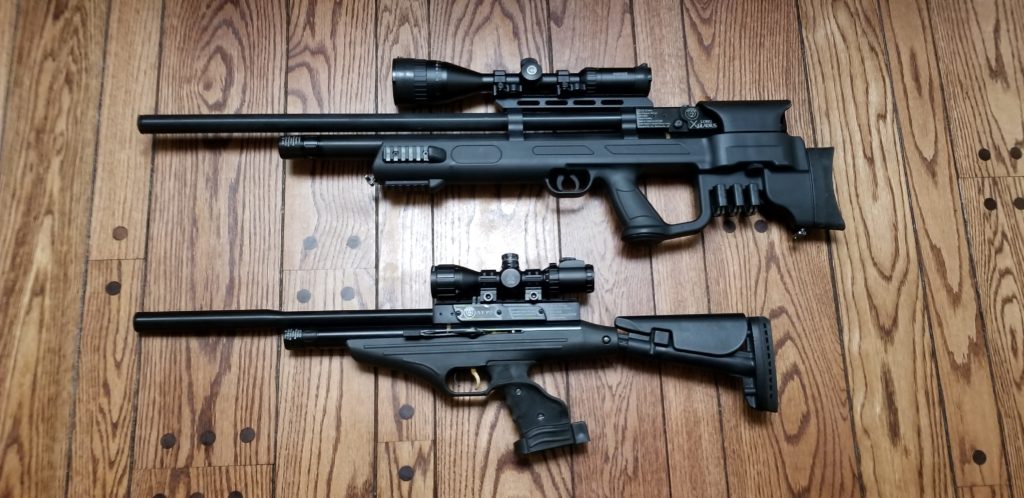
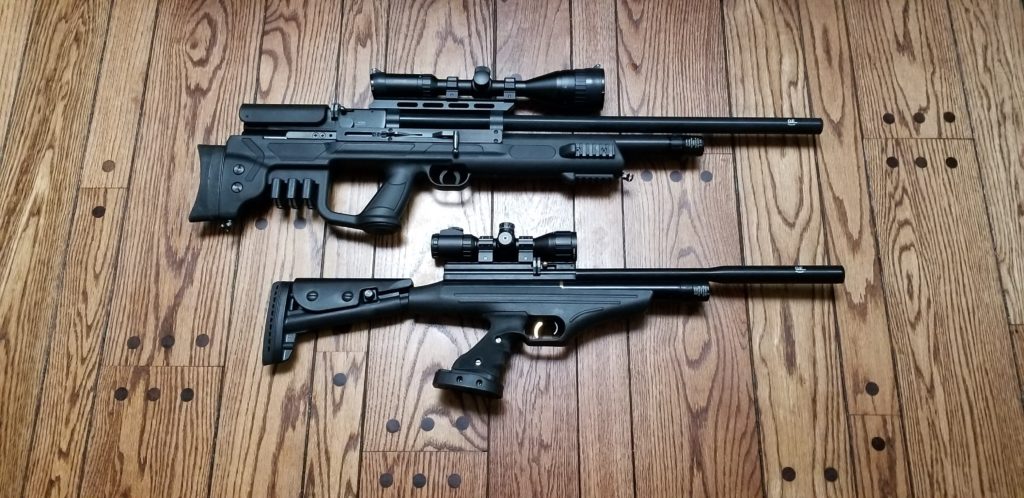
In this next photo, I literally set the AT-P2 QE on top of the Gladius Long and tried to line up the muzzles as best I could so you can see the size difference.
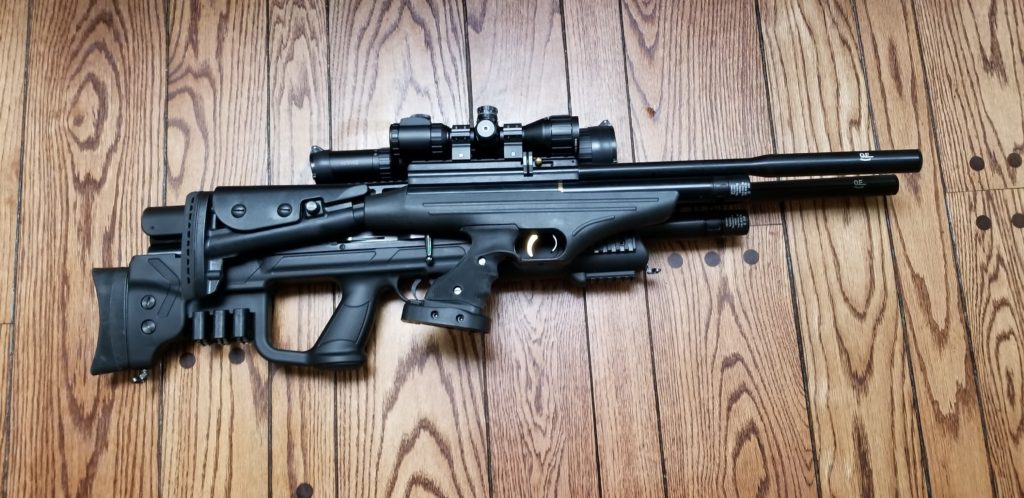
So here’s the comparison of the two:

As you can see the actual package weight including the scope of the AT-P2 QE Tact is 4.6 pounds lighter that the Gladius Long and it is 6-5/8″ shorter.
In terms of energy, I did a lot of reading and can’t tell you for certain. Hatsan themselves says the Gladius Long will produce the following power levels but they don’t tell you the velocity or the weight of the pellet.
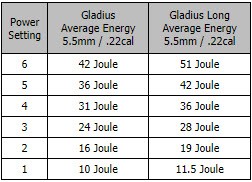
From the 2018 Airgun catalog, Hatsan reports the AT-P2 QE in .22 has a muzzle energy of 27 joules. All things being equal, that puts it between power levels 3 and 4 of the Gladius Long. I tend to switch between those two settings so for me, the power of the AT P2 is right in the sweet zone of what I wanted.
In terms of sound, the Gladius is relatively quiet at 3 and louder at 4. The AT-P2 QE is remarkably quiet. To me as the shooter, cocking the pistol is louder than firing it!
Both pistols have the noteworthy Hatsan Quattro adjustable trigger. I thought the trigger of the Gladius Long was the best factory airgun trigger I had tried until shooting the AT-P2 QE. From the factory, it is light! I need to measure it but it is a dream to shoot because I can hold it rock solid on target effortlessly. On the point of accuracy, it can shoot 1/2″ groups at 10 yards over and over using JSB Exact Jumbo Diablo 15.89 grain pellets.
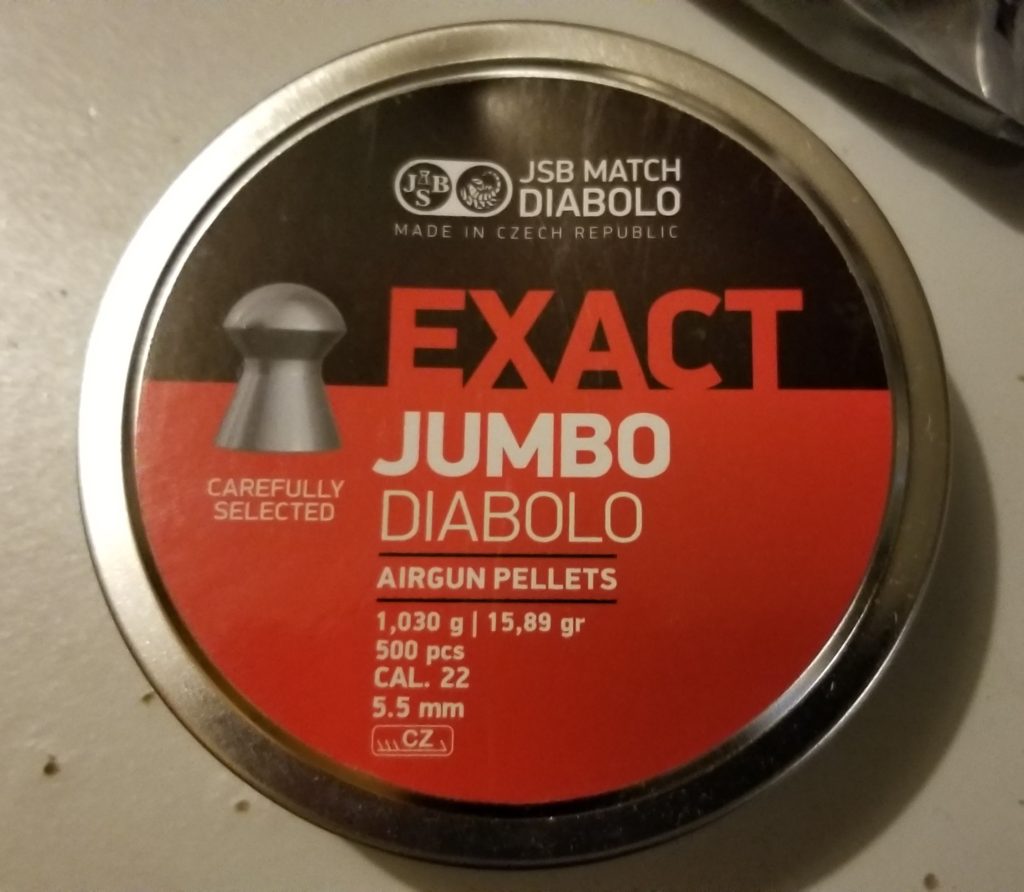
Summary
I’m keeping the Gladius Long for distance shots and/or when I want more power. I will be using the AT-P2 QE for my normal close-in pest work.
6/29/2020 Update: Still very happy with both airguns. We now have replacement fill-probe O-rings and caps to keep your fill probe clean. Click here to learn more.
If you find this post useful, please share the link on Facebook, with your friends, etc. Your support is much appreciated and if you have any feedback, please email me at in**@*********ps.com. Please note that for links to other websites, we are only paid if there is an affiliate program such as Avantlink, Impact, Amazon and eBay and only if you purchase something. If you’d like to directly contribute towards our continued reporting, please visit our funding page.
